The automotive world is rapidly shifting towards electrification, and while fully electric vehicles (EVs) are grabbing headlines, hybrid technology continues to be a practical and efficient stepping stone for many drivers. For those not yet ready to commit to a fully electric lifestyle or lacking convenient charging options, hybrid SUVs offer a compelling blend of fuel savings and traditional SUV practicality. These gas-electric vehicles, which recharge their batteries through regenerative braking and engine power, are becoming increasingly sophisticated, offering improved performance and fuel economy. If you’re seeking to reduce your carbon footprint and fuel costs without the need to plug in, exploring the realm of hybrid SUVs is a smart move. This guide delves into some of the best options available, focusing on compact models that are ideal for urban environments and beyond.
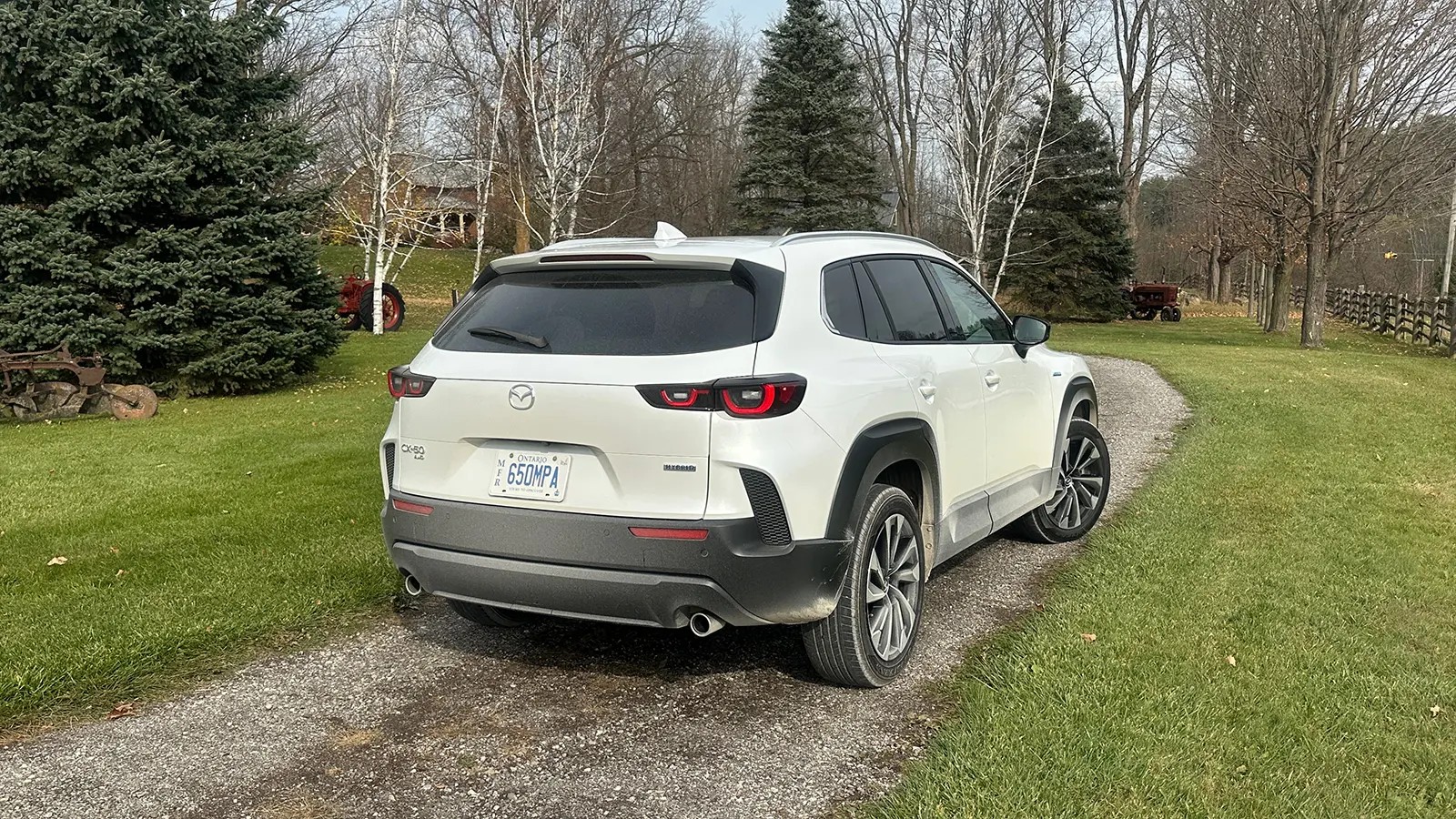 white Mazda CX-50
white Mazda CX-50
Mazda CX-50 Hybrid: A Blend of Refinement and Efficiency
Mazda has long been known for its “zoom-zoom” driving dynamics, but with the 2025 CX-50 Hybrid, the focus shifts slightly towards efficiency without completely abandoning the brand’s sporty character. Building upon the rugged aesthetic of the standard CX-50, the hybrid variant incorporates Toyota’s proven hybrid powertrain technology. Sharing components with the Toyota RAV4 Hybrid, the CX-50 Hybrid delivers a combined 219 horsepower and 163 lb-ft of torque from its 2.5-liter inline-four engine, paired with a continuously variable transmission (CVT) and three electric motors, providing standard electric all-wheel drive.
While the horsepower figure is higher than the base gasoline CX-50, the torque is lower, and significantly less than the turbocharged version. This underscores the CX-50 Hybrid’s prioritization of fuel economy over outright performance, differentiating it from sportier hybrid options like the Hyundai Tucson Hybrid N Line. The CX-50 Hybrid achieves an EPA-estimated 38 mpg combined, a slight step down from the RAV4 Hybrid’s 39 mpg, but still impressive for an SUV in this class.
Integrating the Toyota Hybrid System (THS) into the Mazda CX-50 involved notable engineering adjustments. Beyond hybrid badging, the CX-50 Hybrid features extended body cladding and a slightly taller roof to maintain a 7.6-inch ground clearance despite the addition of a traction battery under the rear seat. While the CX-50 Hybrid is longer than many competitors, its cargo space is slightly reduced compared to other CX-50 models, offering 29.2 cubic feet behind the rear seats versus the standard 31.4 cubic feet. It’s also smaller than the cargo areas in the RAV4 Hybrid and Tucson Hybrid.
The CX-50 Hybrid truly distinguishes itself with its interior ambiance. Mazda has cultivated a subtly upscale cabin, particularly in higher trims, featuring premium materials and a focus on tactile quality. The Premium Plus trim, for example, boasts two-tone leather seats with meticulous stitching, echoed throughout the doors and dashboard. A rotary controller in the center console, a feature often found in luxury vehicles, adds a touch of sophistication and reduces fingerprints on the touchscreen. Physical buttons for seat memory, camera view, and parking sensor deactivation enhance usability.
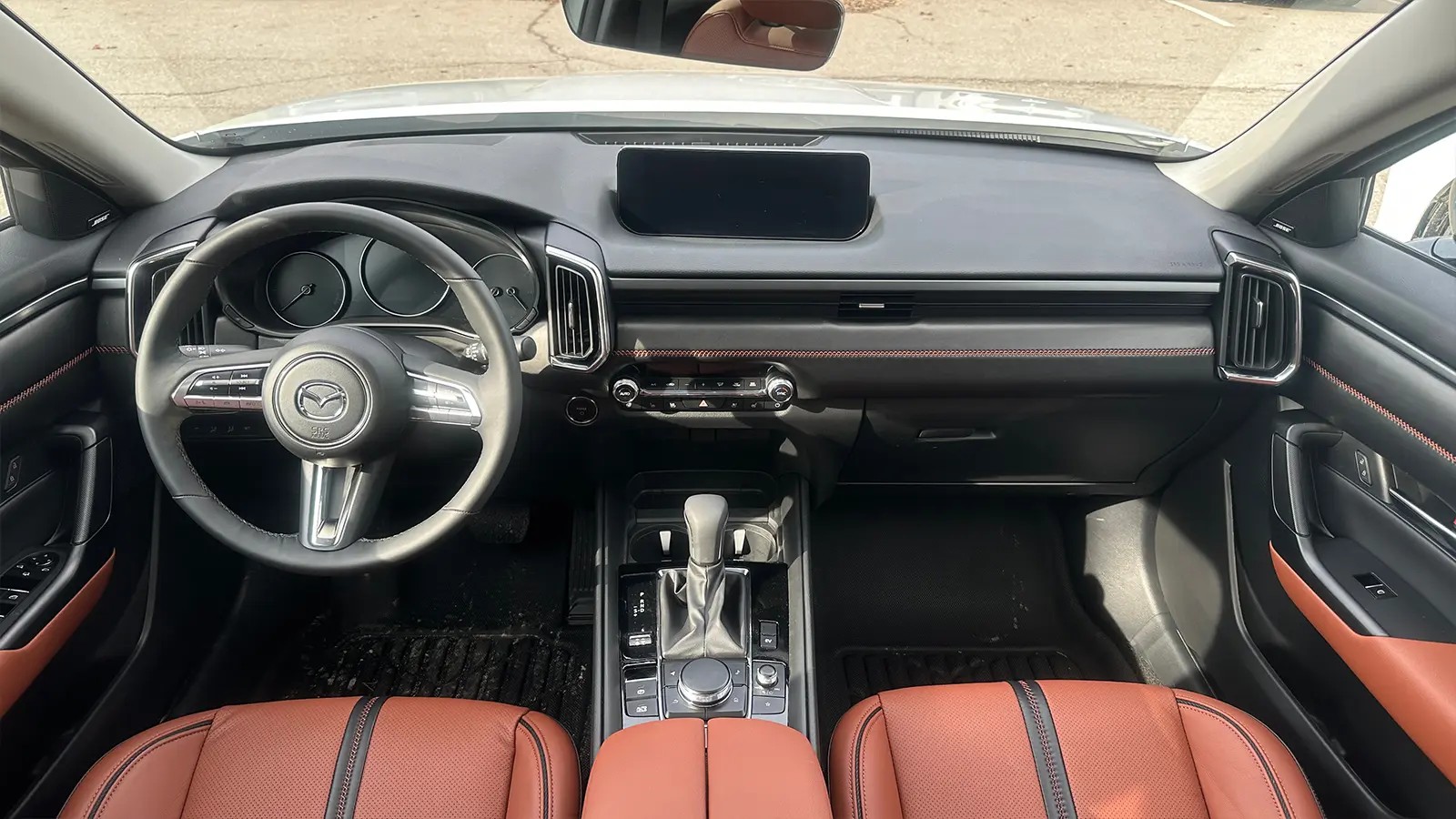 Mazda CX-50 front interior
Mazda CX-50 front interior
The interior design leans towards a more traditional, near-luxury aesthetic, with a balanced mix of buttons and touchscreen controls. The ride quality and cabin quietness are notably refined, possibly exceeding some Toyota hybrids in terms of sound dampening. Overall, the CX-50 Hybrid presents a more sophisticated and fuel-conscious personality compared to previous Mazdas, opting for refinement over the sporty paddle shifters and turbo engines found in other CX-50 trims.
Priced between $34,000 and $40,000 MSRP, the CX-50 Hybrid positions itself above gas-only CX-50 models but below the more performance-oriented Turbo versions, occupying a middle ground in the lineup. This pricing strategy differs from the Hyundai Tucson Hybrid, which offers a wider range of hybrid trims at similar price points, encompassing both efficiency and sportiness.
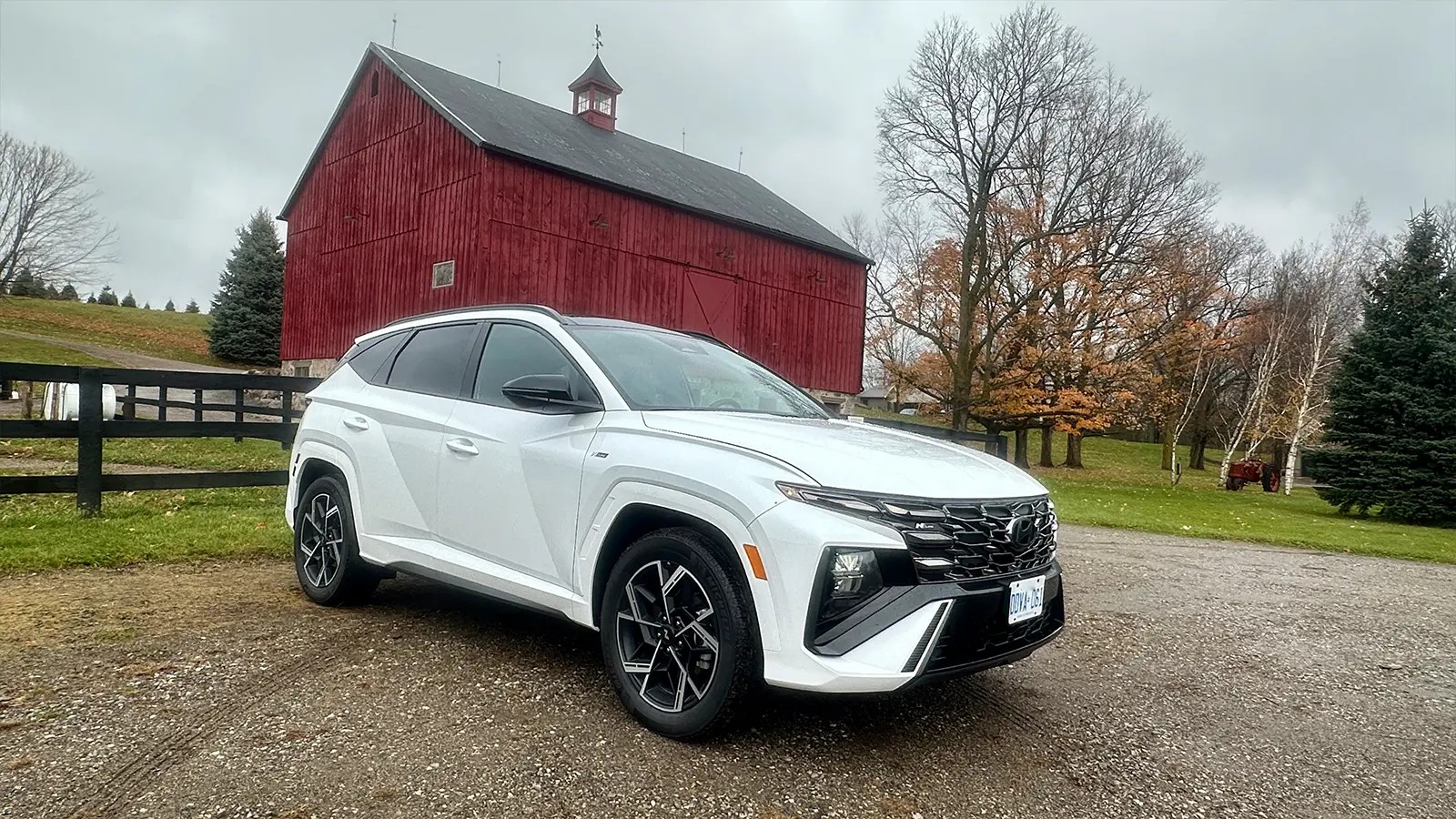 White Hyundai Tucson Hybrid
White Hyundai Tucson Hybrid
Hyundai Tucson Hybrid: A Versatile Hybrid SUV with Trim Choices
Hyundai takes a broader approach with its popular Tucson model, offering a diverse range of powertrains, including gas-only, sport-oriented, and luxury-focused hybrid trims, as well as a plug-in hybrid (PHEV) variant. The Tucson PHEV is an excellent option for those seeking maximum electric driving range for daily commutes while retaining the flexibility of a gasoline engine for longer journeys.
The Tucson Hybrid N Line model tested here showcases the sportier side of the Tucson hybrid lineup. Distinguished by unique 19-inch wheels, black mirror caps, and dual exhaust outlets, the N Line also benefits from the 2025 Tucson refresh, which includes updated LED lighting signatures and wheel designs, and sharper body lines that give it a more modern edge compared to some of its more conventionally styled rivals.
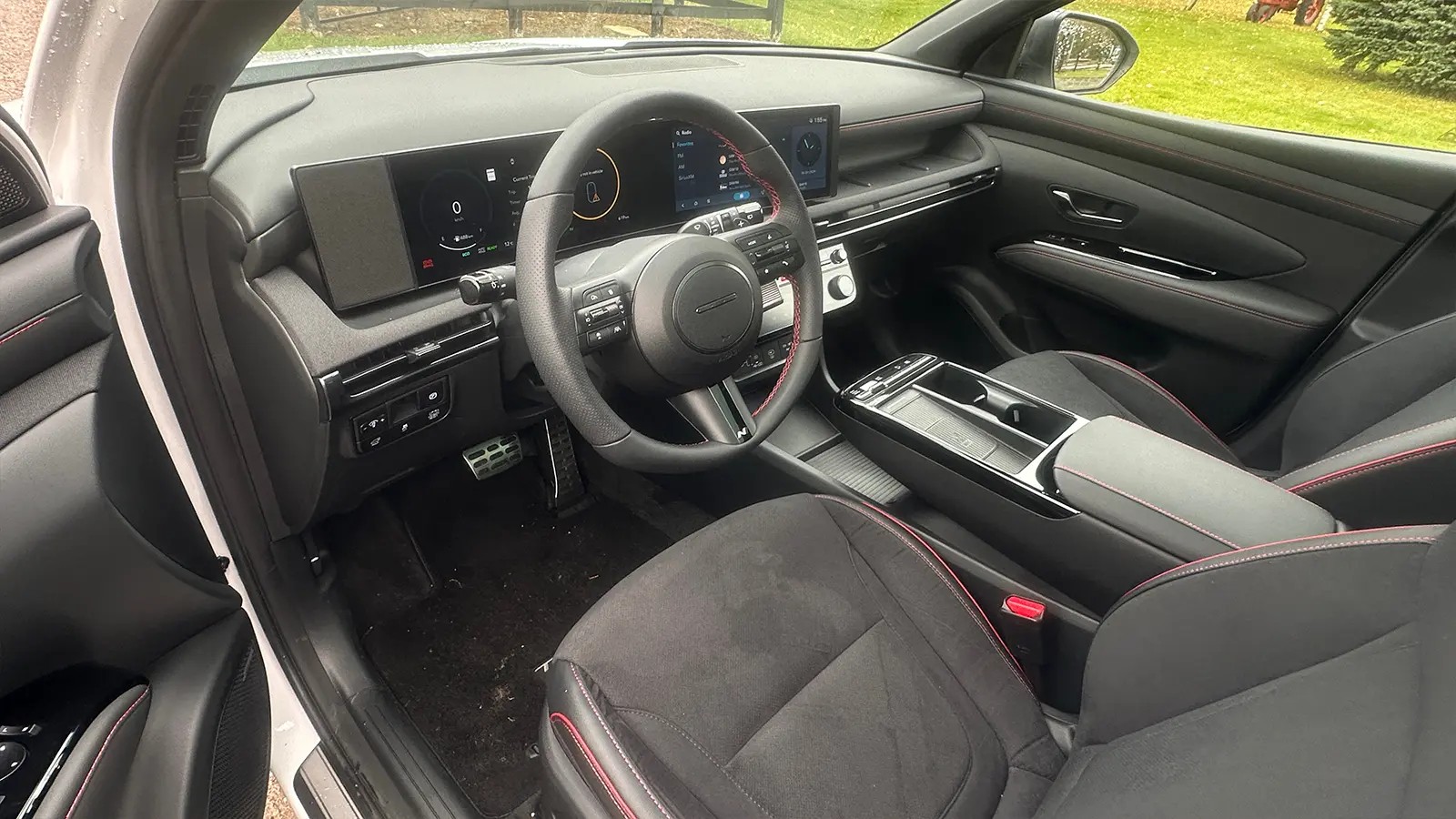 Hyundai Tucson Hybrid front interior
Hyundai Tucson Hybrid front interior
Inside, the Tucson Hybrid N Line presents a contemporary, all-digital cockpit with dual screens replacing traditional gauges. Red stitching accents on the seats, doors, armrest, and steering wheel, along with sporty pedals and an N-branded steering wheel, clearly signal its performance intent.
This sporty aesthetic is backed by a punchy 1.6-liter turbocharged engine, delivering a combined 231 horsepower and 258 lb-ft of torque on premium fuel (regular fuel is also compatible). Unlike the CVT in the Mazda and Lexus, the Tucson Hybrid utilizes a six-speed automatic transmission with paddle shifters for a more engaging driving experience.
While not the most fuel-efficient in its class at 35 mpg combined, the Tucson Hybrid N Line offers a compelling balance of power and efficiency, providing significantly more driving enjoyment and confident acceleration, particularly for highway merging and passing. The powertrain feels more responsive and refined than the Mazda CX-50 Hybrid, and surprisingly, even more so than the Lexus UX300h.
Despite its sporty N Line designation, the Tucson Hybrid N Line’s ride quality remains comfortable and similar to the standard 2025 Tucson XRT, a new soft-roading trim. Interestingly, even with its sporty character, the Hybrid N Line includes “Baby Mode,” a driver-selectable feature that softens initial acceleration for passenger comfort, highlighting its family-friendly nature.
The Tucson Hybrid also scores well in practicality, offering more rear passenger room and cargo space than the Mazda CX-50 Hybrid, and significantly more space than the smaller Lexus UX300h. The Tucson Hybrid N Line emerges as a well-rounded option, blending sporty appeal, family-oriented features, and ample space.
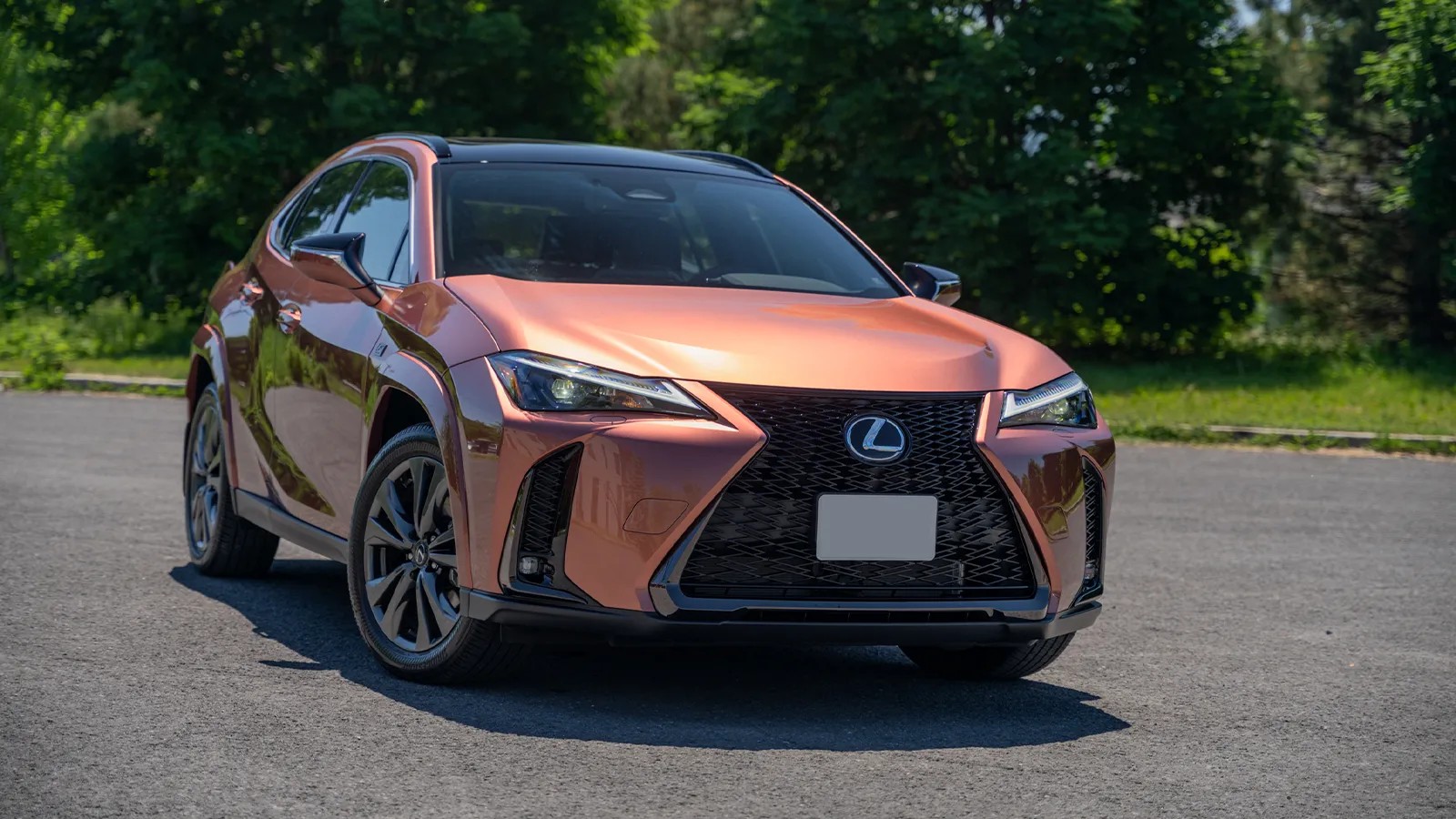 orange Lexus UX300h
orange Lexus UX300h
Lexus UX300h: Compact Luxury Hybrid for Urban Environments
The Lexus UX300h, updated for 2025 (formerly UX250h), presents a more compact and arguably more luxurious take on the hybrid SUV. While it carries the Lexus badge, it feels notably smaller and, surprisingly, less refined in some aspects compared to the mainstream crossovers in this comparison, especially considering its similar price point. The UX300h is available in both front-wheel drive and all-wheel drive configurations.
However, its classification as a compact SUV is debatable. FuelEconomy.gov categorizes the UX300h as a compact car, while the Mazda and Hyundai are classified as Small SUVs. The UX300h arguably leans more towards a subcompact crossover or hatchback in size. While driver space is comparable to its rivals, its smaller footprint is evident when parked alongside the Tucson and CX-50. Despite potential cross-shopping due to price proximity, the UX300h occupies a slightly different segment.
The UX300h’s smaller dimensions can be advantageous for urban dwellers, offering enhanced maneuverability and easier parking. Its styling is arguably appealing, particularly in the higher-trim F Sport version tested, which adds visual flair with unique wheels, grille, black roof, and roof rails. However, the large Lexus grille on the smaller body might be polarizing for some.
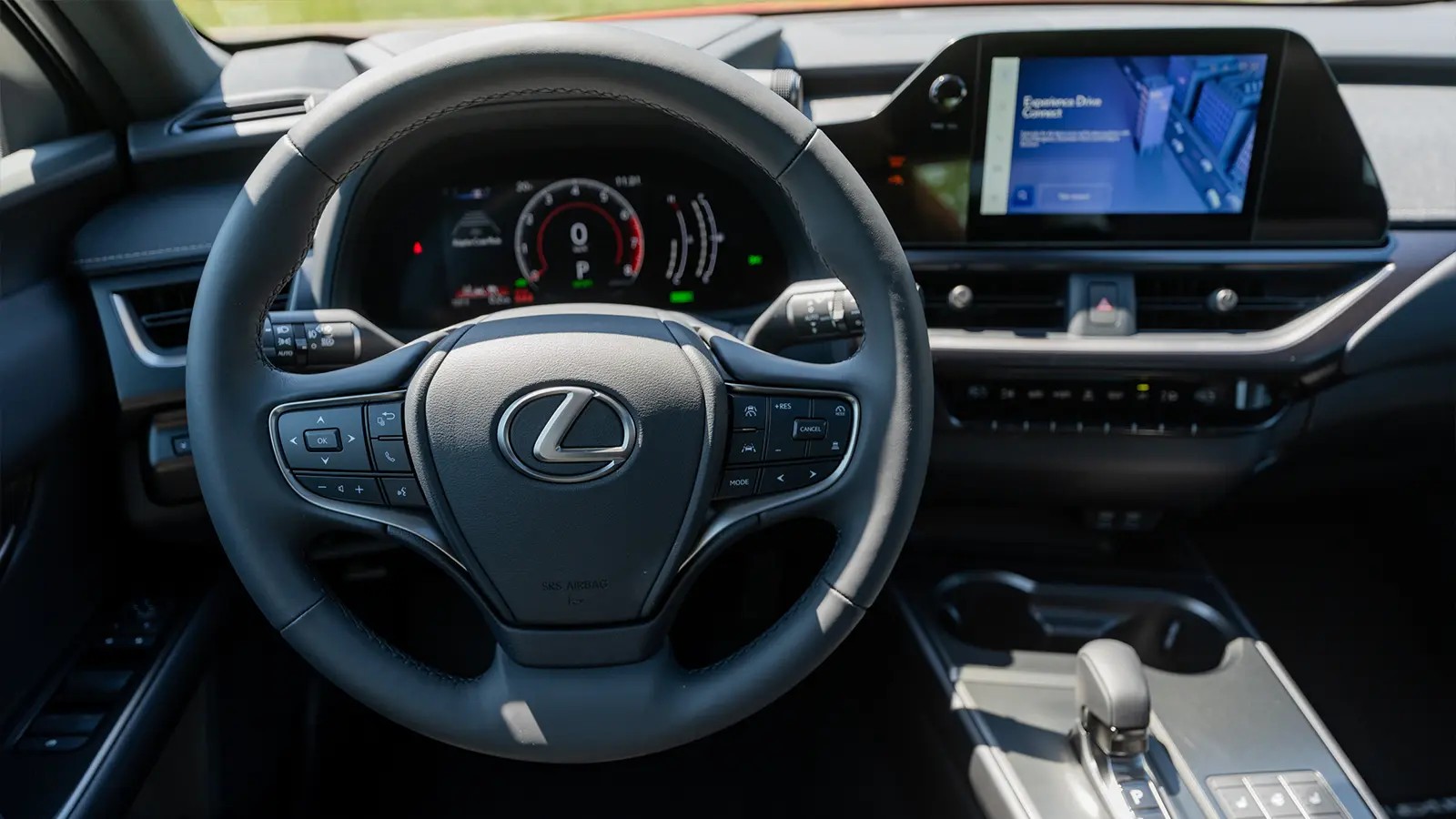 front interior of Lexus UX300h Hybrid
front interior of Lexus UX300h Hybrid
The UX300h’s interior materials, design, driver comfort, and infotainment system are generally well-regarded, especially for drivers under six feet tall, as front space is comparable to competitors. However, rear passenger and cargo space suffer due to its smaller size. The cargo area offers a mere 17.2 cubic feet, less than half the capacity of the Tucson Hybrid.
The UX300h’s gauges appear somewhat dated in a digital era, though it does offer a color head-up display, a feature not found in the Mazda or Hyundai in this comparison. A larger 12.3-inch infotainment screen is now standard on most trims, improving the overall modern feel, but the abundance of physical buttons reflects a design from a pre-dominantly digital era, which some may find comforting.
Drivetrain updates for 2025 include a shift-by-wire CVT and the adoption of a lithium-ion battery, a first for Lexus hybrids, replacing the nickel-metal hydride batteries used in the Mazda and many Toyota hybrids. Power output has increased to 196 horsepower. The AWD model achieves 42 mpg combined, nearly matching the FWD version’s 43 mpg. However, the engine noise remains a point of contention, described as loud and uncharacteristic of Lexus refinement, possibly more noticeable now that the larger battery allows for longer periods of quieter electric operation.
The UX300h’s primary strength lies in its price point. With a starting MSRP of $37,515 for the FWD model and $43,035 for the F Sport AWD version tested, it offers a relatively accessible entry into the luxury hybrid SUV segment. While you gain upscale interior materials and design, you compromise on interior space compared to larger rivals.
Conclusion: Choosing the Best Hybrid SUV for Your Needs
Each of these compact hybrid SUVs presents a unique set of strengths and weaknesses. The Mazda CX-50 Hybrid emphasizes refined interior quality and a comfortable ride, blending efficiency with a touch of Mazda’s signature driving feel. The Lexus UX300h offers a more compact and luxurious option, ideal for urban environments and buyers prioritizing a premium badge and fuel economy in a smaller package.
However, when considering the overall package of practicality, performance, and modern design, the Hyundai Tucson Hybrid emerges as the most compelling choice among these three. It delivers a balanced blend of fuel efficiency, enjoyable performance, and ample space for passengers and cargo. Wrapped in a contemporary and stylish design, both inside and out, the Tucson Hybrid offers a forward-looking appeal that is likely to remain fresh for years to come, making it a strong contender in the evolving landscape of hybrid SUVs and a top pick as the best SUV hybrid in this comparison.
*All mileage claims are EPA estimated.
